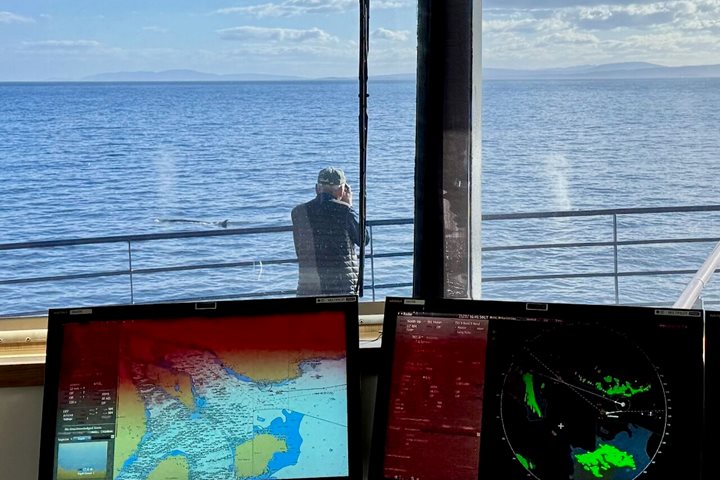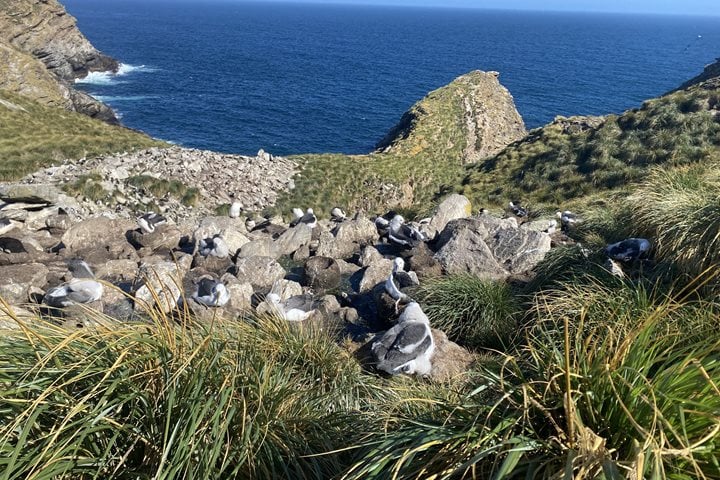On a blustery Tuesday, National Geographic Explorer found her way into King Haakon Bay on the island of South Georgia. The conditions, windy and rough, were typical for this piece of land, and explorers wouldn’t have it any other way. Situated in the middle of the moody Southern Ocean, 129 miles of mountain and rocky beach stretch from the northwest to southeast shore. Home to millions of critters—marine mammals to thriving seabird colonies—this wildlife haven is unparalleled worldwide.
There are two very important locations, historically speaking, in this fjord. When Sir Ernest Shackleton’s expedition vessel was destroyed in the Weddell Sea in the early 1900s, he and his five men sailed a small lifeboat, the James Caird, all the way from Elephant Island, losing the rudder upon landing in Cape Cove in May 1916. The rudder washed up on the very same shore three days later, and the team headed to Peggotty Bluff, where they began their hike across the impressive peaks and down into Grytviken whaling station in the final push of their journey.
Peggotty Bluff was the first landing of our voyage, and many guests stepped onto polar ground for the first time there. During Zodiac cruises in this remarkable place, guests observed myriad South Georgian wildlife. From fur seals to leopard seals, Gentoo penguins to Antarctic shags, all animals in this region rely on the ocean.
As the ship picked up anchor and set sail around the corner to the northern coast, our evening recap was interrupted in the best way—killer whales off the bow! Three Type A killer whales, the largest eco-type known. We watched the impressive animals in the water while the mountainous background of South Georgia sat stoic. This is a remarkable place, and those who visit are incredibly lucky to witness such diversity in both landscape and fauna.







